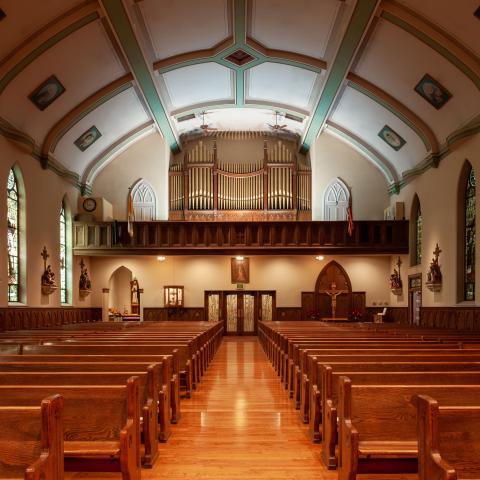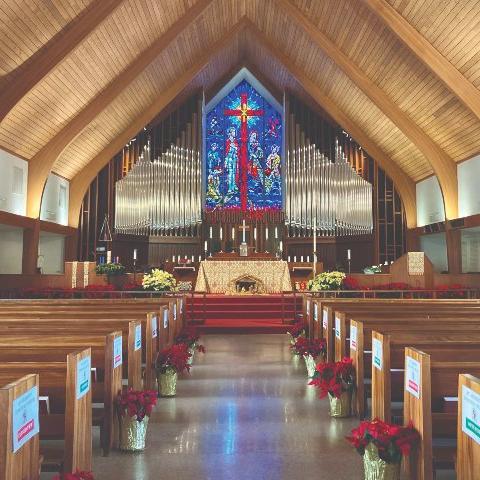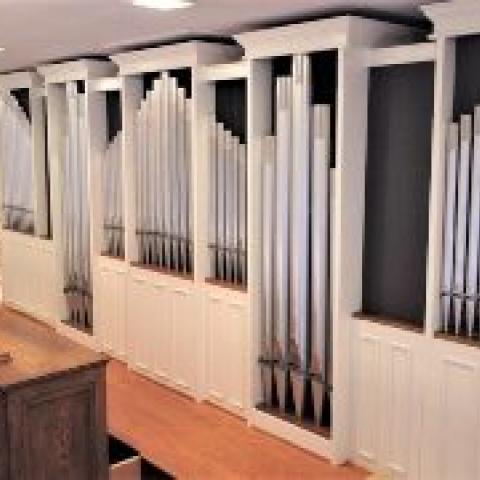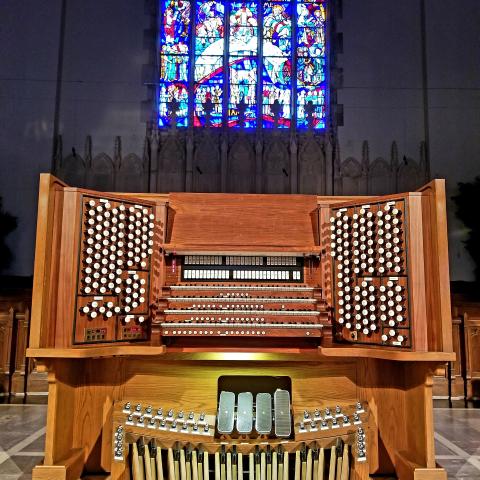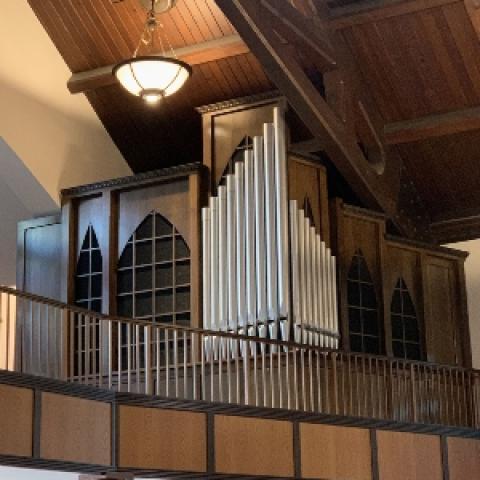Berghaus Pipe Organ Builders, Bellwood, Illinois
Saint Paul’s Memorial United Methodist Church, South Bend, Indiana
Every organ project is unique, but the unusual circumstances surrounding our introduction to the project at Saint Paul’s Memorial United Methodist Church make it stand out. The opportunity came to our attention after a friend of the firm took an architectural tour of the church, and Saint Paul’s was kind enough to allow us to assess the organ and provide several options for consideration.
When we inspected the 1902 Bennett Organ Co. instrument, the original leathers were deteriorating and the organ was unreliable at best. The process of converting the electro-pneumatic action to an electric-valve action had already begun, and the church was looking for a bid to continue that process and rebuild the rest of the organ in its original configuration.
In addition to furnishing the requested bid, Berghaus gave the option to convert the main chestwork to slider chests, reconfigure the chamber, build a new steel structure, new enclosures, new wind system, and new console in a much more comprehensive approach to rebuilding the instrument.
The slider chest approach appealed to Saint Paul’s Memorial, providing a multitude of benefits. The simplicity of a slider chest reduces the number of moving parts from the thousands to the hundreds, lowers the maintenance costs as a result, creates less chance of malfunction or failure, and provides a common wind channel for excellent tuning stability and blend.
Reconfiguration of the chamber allows for easier access and serviceability of the instrument. The new steel structure provides sturdy support for the 13-1⁄4-inch tongue-and-groove expression chamber walls and shades. New reservoirs and wooden windlines reduce noise and turbulence, providing a steady wind supply to the chests. New electro-pneumatic offset chests support the largest bass pipes. A new custom cherry console, built to AGO standards, provides the organist with a comfortable setting from which to play the instrument.
As the stoplist shows, many ranks of the original Bennett instrument still remain; however, some of the pipework was so badly damaged that Berghaus elected to replace it with vintage sources from our inventory. Our pipe specialists repaired all ranks and revoiced them to give the organ its signature sound with the new elements providing more color possibilities. The crowning of the organ is the 23-karat gold gilding of the original façade pipes, which makes the organ look as sumptuous as it sounds.
The organ was completed in November 2017. Over 200 people attended the dedicatory concert given by former Berghaus tonal director Jonathan Oblander on April 6, 2018.
—Brian Berghaus, President
GREAT (Manual II, unenclosed)
8′ Open Diapason (façade, existing, 61 pipes)
8′ Doppelflöte (existing, 61 pipes)
8′ Gemshorn (from inventory, Ruffatti, 61 pipes)
4′ Principal (existing, 61 pipes)
22⁄3′ Nasard (existing, 61 pipes)
2′ Super Octave (existing, 61 pipes)
11⁄3′ Plein Jeu III (existing and Berghaus inventory, 183 pipes)
Tremolo
Chimes (new action, 25 bars)
SWELL (Manual III, enclosed)
16′ Gedeckt (existing, 61 pipes)
8′ Open Diapason (existing, 61 pipes)
8′ Chimney Flute (existing, 61 pipes)
8′ Salicional (existing, 61 pipes)
8′ Voix Celeste (TC, from inventory, Wangerin, 49 pipes)
8′ Aeoline (from inventory, Estey, 61 pipes)
4′ Harmonic Flute (from inventory, Casavant, 61 pipes)
2′ Flageolet (existing, 61 pipes)
8′ Trumpet (existing, 61 pipes)
8′ Oboe (from inventory, Wicks, 61 pipes)
8′ Vox Humana (from inventory, Wangerin, 61 pipes)
4′ Clarion (existing, 61 pipes)
Tremolo
CHOIR (Manual I, enclosed)
8′ Geigen Principal (existing, 61 pipes)
8′ Melodia (existing, 61 pipes)
8′ Flute Celeste (TC, new, 49 pipes)
8′ Dulciana (existing and from inventory, Casavant, 61 pipes)
8′ Unda Maris (TC, from inventory, Casavant, 49 pipes)
4′ Flute Octaviante (existing, 61 pipes)
8′ Orchestral Oboe (existing, 61 pipes)
8′ Clarinet (existing, 61 pipes)
Tremolo
PEDAL (unenclosed)
16′ Open Diapason (existing and from inventory, Casavant, 56 pipes)
16′ Violone (façade, existing, 32 pipes)
16′ Bourdon (existing, 44 pipes)
16′ Gedeckt (fr Sw)
8′ Octave (ext 16′)
8′ Bass Flute (ext 16′)
8′ Still Gedeckt (Sw 16′)
4′ Choral Bass (ext 16′)
16′ Contra Fagotto (existing, 44 pipes)
8′ Fagotto (ext 16′)
Full complement of couplers
Peterson ICS-4000 combination action system
Record/Playback feature
Programmable crescendo and Tutti functions
Three manuals, 33 ranks, 1,909 pipes


